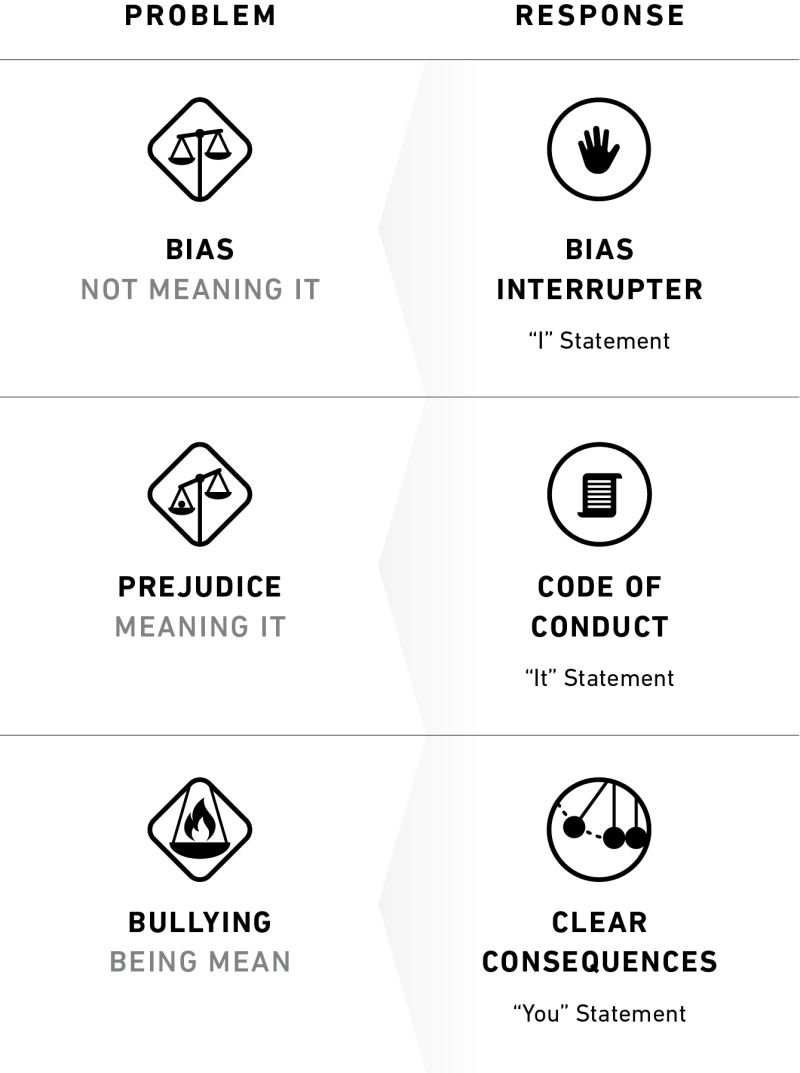What gets in the way of basic fairness at work?
Three things: bias, prejudice, and bullying. Each is different and must be considered separately if we are to come up with the most effective ways to combat each. When a power imbalance is present, things get much worse quickly—discrimination, harassment, and physical violations occur.
PROBELMS
Here are some super short definitions to help keep us oriented in a problem that can be very disorienting. Bias is “not meaning it.” Bias, often called unconscious bias, comes from the part of our mind that jumps to conclusions, usually without our even being aware of it. These conclusions and assumptions aren’t always wrong, but they often are, especially when they reflect stereotypes. We do not have to be the helpless victims of our brains. We can learn to disrupt our biases.
Prejudice is “meaning it.” Unfortunately, when we stop to think, we don’t always come up with the best answer, either. Sometimes we rationalize our biases and they harden into prejudices.4 In other words, we justify our biases rather than challenging their flawed assumptions and stereotypes.
Bullying is “being mean”: the intentional, repeated use of in-group status or power to harm or humiliate others. Sometimes bullying comes with prejudice, but often it’s a more instinctive behavior. There may be no thought or ideology at all behind it. It can be a plan or just an animal instinct to dominate, to coerce.
RESPONSES
The most effective responses match the problem you'r trying to solve.
Interrupt bias. When people’s biases are pointed out to them clearly and compassionately, they usually correct them and apologize. An “I” statement is an effective response to bias. “I don’t think you meant that the way it sounded.”
Address prejudice with a code of conduct that explains where the line is between one person's right to believe anything and another's not to have those beliefs imposed on them. An “it” statement appeals to this code. “It is illegal to…” or “It is an HR violation to…” or “It is ridiculous to…”
Bullying has to incur real consequences to be stopped. A “you” statement is effective. “You can’t talk to me like that!” or “What’s going on for you here?”
Your degrees of responsibility when confronting bias, prejudice, and bullying depend on your role. If you’re the leader, it’s your job to prevent these things from destroying your team’s ability to collaborate. If you're an observer, you have an obligation to intervene, even if it’s just to pull the target aside after and offer compassion. If you are the person who caused harm, your obligation is to listen and address. And if you are the target of bias, prejudice or bullying, you get to choose your response. Being a proponent of Radical Candor, my instinct is to speak up, but I have no desire to tell you what you “should” do. My advice though is that if you choose silence, make it an active choice.
Here is a cheat sheet you can use in the heat of the moment:
#JustWork


